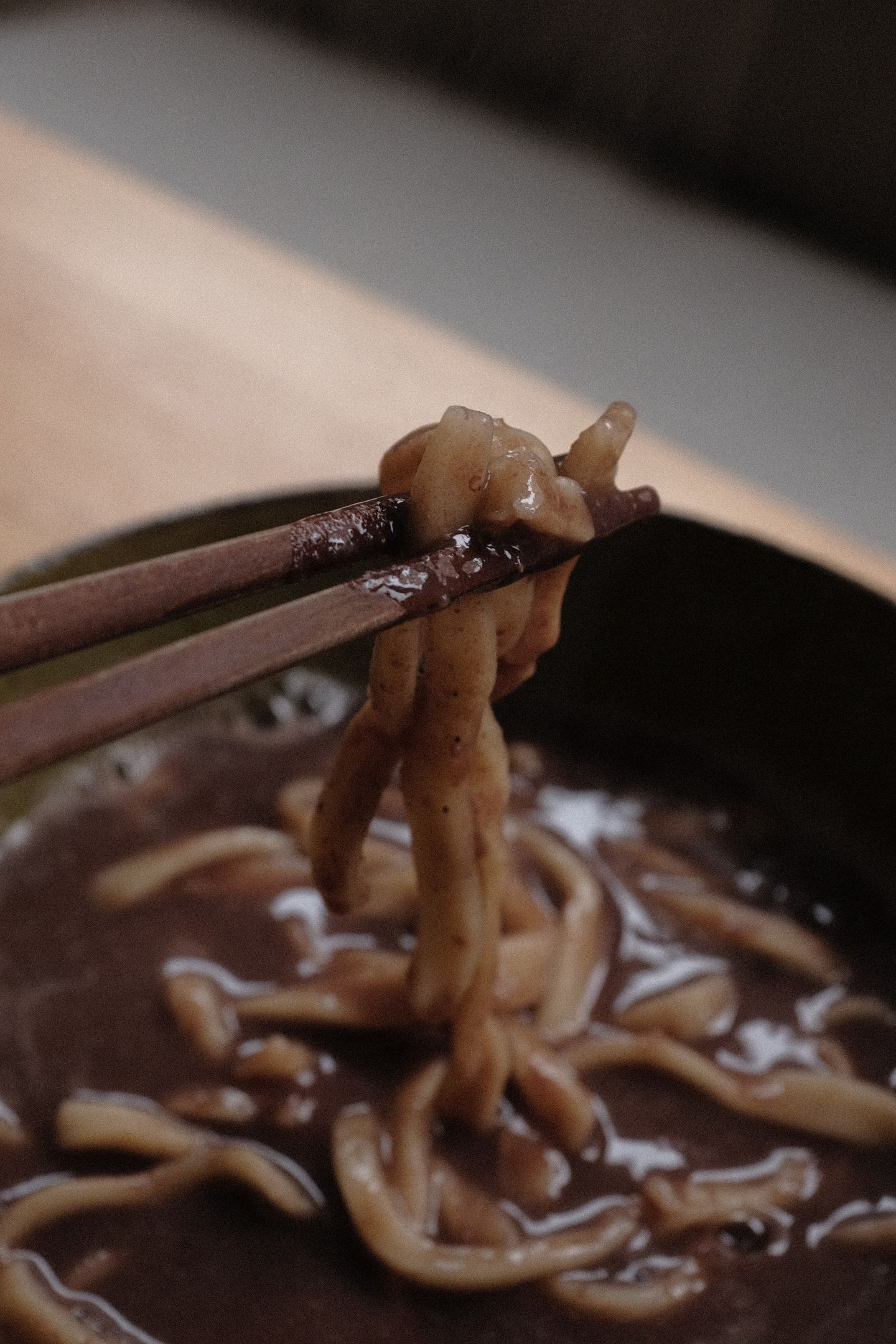Patjuk was a "common and special" dish to me (Patjuk: Red bean porridge. Pat means red bean, and juk means porridge). It was common because my mom cooked it either whenever she wanted or at every Dongji (a special Winter occasion). And it was special because it's not a daily dish. However, from a certain point, it became hard for me to call it "common." It became just "special."
When I started to live alone, I was almost broke. There were unexpected expenses here and there. I was nervous all the time, and it was quite overwhelming. Whenever I was too tired or didn't have enough time to cook, I went out to eat. They mostly had too much artificial flavor, far different from what I had at home, for example, chicken Galbi, Tonkatsu, pizza, etc. Spending my precious money, I didn't even think of having something like Patjuk.
One day, I saw Patjuk on a menu. I had to order it. Waiting for it, I felt this weird feeling that I'm now independent eating Patjuk outside the home. Soon they served it. And I got so surprised.
The bowl was full of cooked rice. It was literally a porridge. What I used to call "Patjuk" was either noodle soup or soup with little ball-like rice cakes. The texture and the flavor of the porridge were weird to me. I had a couple of spoons and had to leave without finishing it.
My parents are from a region called Jeollanam-do. In Jeollanam-do, they put in red bean dregs Kal-guksu instead of rice (Kal-guksu: knife-cut wheat flour noodles. Kal means knife, and guksu means noodle). They call the one with noodle "Patjuk" and the one with rice cake "Dongji Patjuk." So, to order what I wanted, I had to say "Pat-kalguksu" instead of "Patjuk." At that time, Pat-kalguksu was not a common menu where I lived. When I visit mom, and she decides to cook it, then it was the only chance. Some years later, I've found some restaurants that have the menu. It was no longer a "common" dish. Another some years later, I got used to cooking and started to make Pat-kalguku by myself. And it has become a totally "special" dish to me.
The more you put in the effort, the tastier Pat-kalguksu becomes. You only need red bean, water, flour, and salt. It's simple, so it's easy to make it too characterless. For example, you can use a blender to blend all the boiled red beans, but the texture overall becomes very coarse and rough. Even if you boil the red bean for a long time, some beans are still hard. The crushed hard beans will ruin the texture along with the ground bean peels. So the slow and right way to do it is to use a fine-mesh strainer, pressing down the boiled red bean with pouring a little water over it from time to time.
It takes quite an effort but is doable. You can experience the magical transition from simple ingredients to a delicious dish. The color of red beans change, and the rough dough becomes smooth. I see the pile of red bean peels on the counter. The red bean dregs that I put in a lot of effort look so pure. Cutting the flat dough into slices, I feel like I have become a master of something.
Since some time ago, I see instant products of Pat-kalguksu in Korean marts. I'm wondering if there are more restaurants now in Korea where they have Pat-kalguksu. Even if I cook the instant product, or even if many restaurants open in Paris with the menu, I don't think I will ever call it a "common" dish. Now I know how to cook it and how it takes careful effort to cook it. I remember the old flavor that I had at home. So it will always be "special" to me.
Boil red beans
Kalguksu dough
Pat-kalguksu
1. Soak the beans a day before cooking
2. Slightly boil the beans
3. Boil the beans
4. Knead the dough
5. Get the boiled red bean water and the dregs.
6. Flatten the dough and cut it into noodles
7. Boil and rinse the noodles
8. Cook Pat-kalguksu
* note
